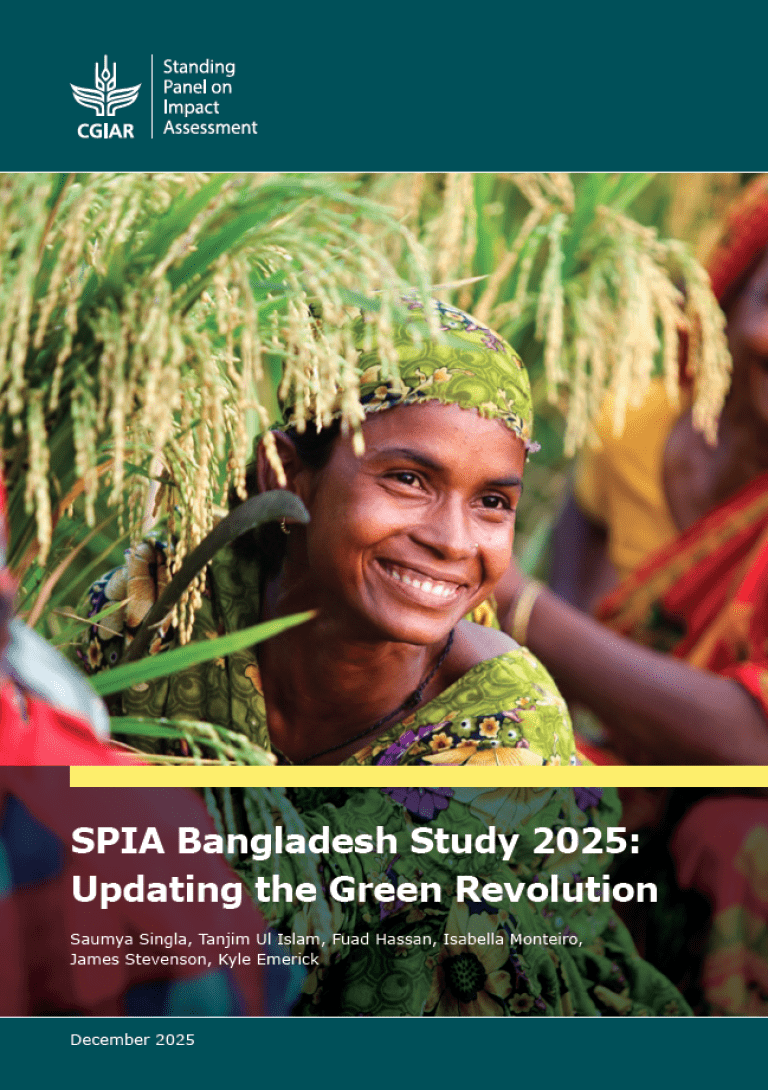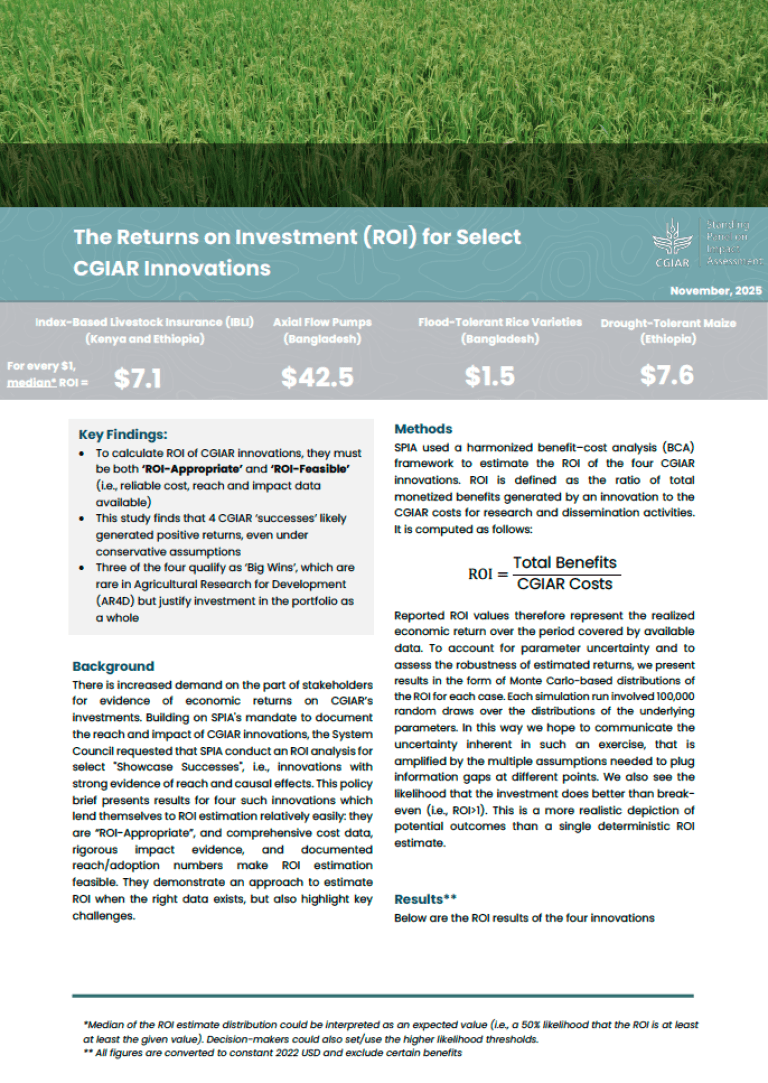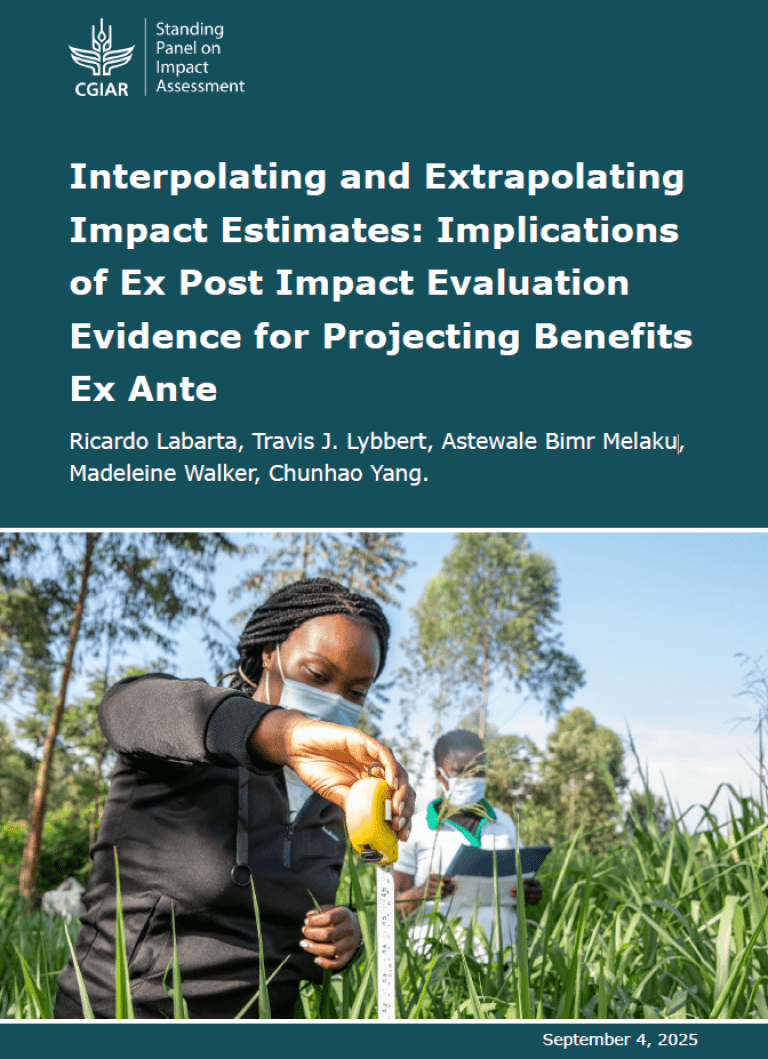IAFP Focal Point Meeting at AAEA 2025
IAFP Focal Point Meeting at AAEA 2025
On 27 July 2025, SPIA convened a full-day, in-person session with Impact Assessment Focal Points (IAFPs) from across CGIAR centers. Held on the sidelines of the AAEA & WAEA Joint Annual Meeting in Denver, the meeting comprised three sessions and brought together IAFP representatives, SPIA panel members, and the professional team to reflect on the evolving role of impact assessments (IA) within the CGIAR system.
Session 1 focused on the current state of IA across CGIAR. While some centers have dedicated IA units, others embed IA within broader units, and the extent of IA integration further varies across Science Programs. Funding constraints remain a common challenge, with IA often expected but rarely resourced as a core activity. Emerging solutions include cost-effective methods such as systematic reviews and meta-analyses, though participants emphasized the importance of maintaining methodological rigor.
Discussions also highlighted the need to define key concepts such as “impact”, “impact evaluation” and “impact assessment”, and to improve alignment across Monitoring, Evaluation, and Learning (MEL), IA, and Foresight efforts under the new CGIAR grant.
Furthermore, opportunities for better coordination across centers and countries were highlighted. Examples such as Breeding for Tomorrow’s collaboration in Kenya and the development of shared tools for gender impact assessments demonstrated the value of harmonization. However, institutional incentives and funding silos continue to limit progress. Participants called for more SPIA-led matchmaking opportunities, in-person convenings, webinars to share methodologies and receive feedback, and to have a clearer communication strategy on IA’s return on investment to system leaders and donors.
Session 2 offered updates on SPIA’s ongoing workplan and approach. Country studies remain central to estimating CGIAR’s reach, with expansion planned from four pilot countries to twenty by 2030. SPIA also described its accountability and learning study streams, alongside an increased focus on promoting evidence use through synthesis and dialogue. Discussions also explored the challenge of demonstrating return on investment, an area that SPIA is now piloting with a commissioned analysis.
As a part of Session 2, SPIA panel members Kyle Emerick and Monica Biradavolu led focused sessions on ‘Building Replicable Workflows’ and ‘Using Qualitative Methods in IA Research,’ respectively. These sessions sparked lively exchanges on the opportunities and challenges of using mixed methods approaches and their scalability for multi-country studies.
Session 3, open to the wider AAEA audience, centered on the use and uptake of evidence. Participants discussed challenges with CGIAR system-wide reporting, as exemplified by the recent Type II impact report, and stressed the importance of tailoring evidence to the needs of specific audiences. Key takeaways included prioritizing the value of long-term partnerships, exploring new metrics and impact pathways, embedding IA into program scaling pathways, and better aligning research incentives with sustained policy engagement.



